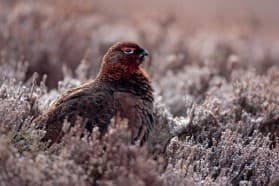If you want to know the best places to capture images of a mountain hare, or a red stag rut, look no further than one of Scotland’s finest, Neil McIntyre.
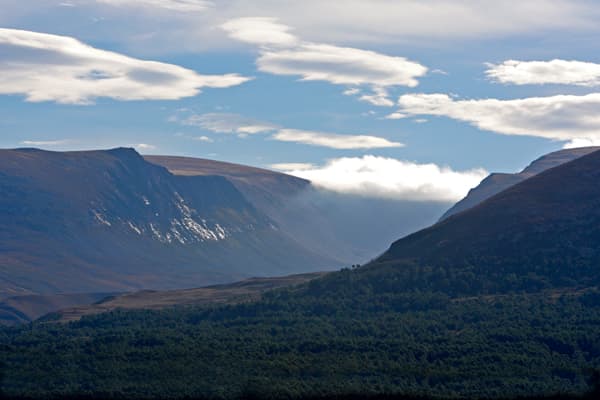
The Lairig Ghru pass in the Cairngorm Mountains. Using the 70-200mm zoom I was able to compose this image from the wider scene around me. 1/250sec@f/11, ISO 100
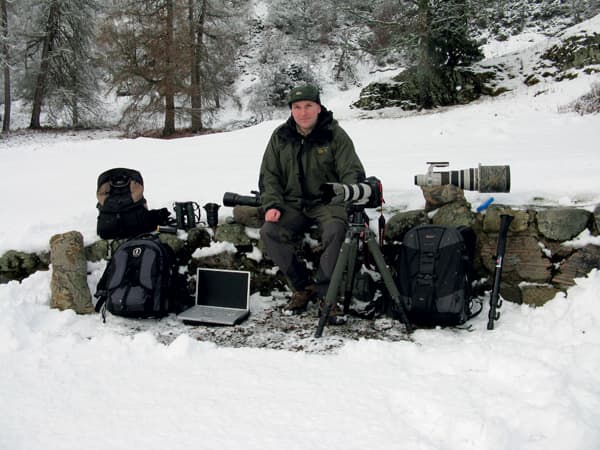 Having grown up the son of a Perthshire gamekeeper on the eastern edge of Scotland, Neil Mclntyre was well placed to learn about the animals that would become his chosen photographic subject later in life. And not only did it expose him to the wonders that nature beholds, but his father’s profession also provided him with invaluable knowledge about their habits and the best places to find them – an essential asset to any photographer’s armoury if they want to achieve superb wildlife shots.
Having grown up the son of a Perthshire gamekeeper on the eastern edge of Scotland, Neil Mclntyre was well placed to learn about the animals that would become his chosen photographic subject later in life. And not only did it expose him to the wonders that nature beholds, but his father’s profession also provided him with invaluable knowledge about their habits and the best places to find them – an essential asset to any photographer’s armoury if they want to achieve superb wildlife shots.
‘It was an ideal place to grow up,’ Neil McIntyre. ‘The vast expanse of countryside, filled with so many varieties of wildlife, was a haven for someone as keen on nature as I was. And when famous wildlife photographer Hugh Miles visited the estate my father worked on to film a documentary about wildlife, I became really interested in photography and wanted to know more about it.
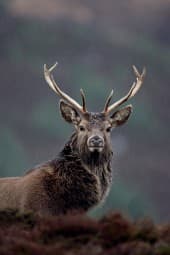
The 500mm isolated the stag against the dark background, 1/85sec@f/4, ISO 100
‘At the time I was about 15 and it took me till my late teens to save up enough money to buy my first camera – a Pentax ME Super. Following on from this I bought a Tokina 400mm f/5.6, and it wasn’t long before I was out and about, snapping away’.
‘I’m very much self-taught, and going out taking pictures the way I did enabled me to make my own mistakes and learn from them – all in all a great grounding for my later photographic career. My first career had been as a carpenter, and such a profession allowed me to arrange my working day around it so that I could include excursions out and about with the camera. Soon I had knocked my working week down to four days with the rest dedicated to photography. I gradually cut this down even further, and before I knew it, I was doing photography full-time.
‘Since I’d started, technology had moved on tremendously, but I was determined to carry on using film, and didn’t switch to digital straightaway. This being the case I bought a Canon T90 and used it with a Canon 500mm lens to capture wildlife shots. From there I gradually built up my equipment, and eventually invested in two Canon EOS 1V HS bodies, along with some of the high- spec lenses that had come onto the market. The main share of my work remained wildlife photography, and at the time my clients included wildlife magazines and country pursuits publications, with a fair percentage of my work going to the Planet Earth agency before Getty Images gobbled it up. Scottish Natural Heritage was another client of note.
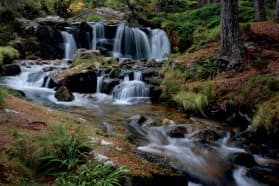
Nice overcast days are best to capture scenes like this waterfall, Canon EOS-1D Mark II N, 17-40mm lens, 0.5 sec @ f23, ISO 100
‘I personally left it as long as possible before switching to digital, and it was just two years ago that I bought my first digital SLR – a Canon EOS 20D. I was very impressed with the results, and a year later, upgraded to a Canon 1D MkII N. My 20D was then sold to a very good friend. So I’m just using the one body at the moment but still have my film SLR bodies. I’m already looking to invest in a second DSLR, but just don’t know which one to go for yet.
‘My aspirations for the future are to keep taking shots and make them as original as possible, and also give whoever sees them the feeling that they are, in a small way, there as well. It sounds obvious, but photography has brought me so much joy over the years, I can’t see myself giving it up. In two to three years I would like to have launched a book on a particular subject, and that’s definitely something that’s in the pipeline.’
Neil McIntyre Profile – Neil’s Kit
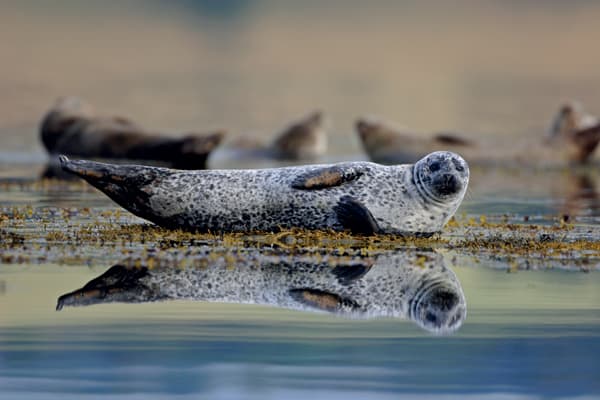
Lying flat and using a beanbag to rest the 500mm lens on I was able to get a low viewpoint to show the seal’s reflection on the calm water.
Here’s a breakdown of what’s in Neil McIntyre’s kit bag
Canon 1D Mk11 N
I’ve got a Canon EOS 1D MK II body. It was the fast autofocus of Canon models that first appealed to me and I’ve remained with them ever since.
Canon 500mm f/4 IS L
A popular lens with many wildlife photographers, this piece of my kit gets very regular use. I’ve had quite a few front covers with it, and it’s a great way to get close to your subject without scaring them away. I’ve also got 1.4x and 2x convertors.
Canon 70-200mm f/2.8 IS L
This is a great lens for wildlife and some landscape shots. It’s versatile and has been a popular Canon lens for a long while.
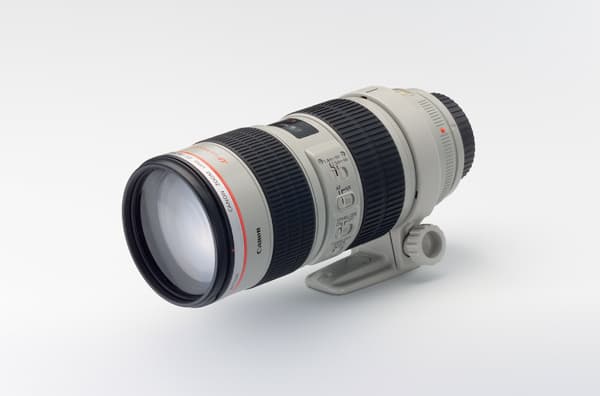 Canon 180mm Macro f/3.5
Canon 180mm Macro f/3.5
Obviously great for close-up work, and a real asset to my camera bag.
Canon 17-40mm f/4 L
This is my main landscape lens, and gives me all the optical quality that I need.
Tripod and Monopod
I use a Gitzo G1348 carbon fibre tripod with an Arca Swiss B1 QS monoball head – it’s sturdy and not too heavy. I also have a Manfrotto monopod – great when you want your camera up quickly but don’t have time to erect the tripod.
Storage
Storage comes in the form of a selection of memory cards. I use 1 and 2GB cards, as I don’t want all my images to be on just the one card, and I have an Apple Powerbook.
Lee Filters
These will include some Neutral Density (ND) filters and a polariser.
Spare Battery Pack
I’ve got a spare battery pack for my Canon 1D MkII N, because I’m often out in cold weather conditions and this can rapidly drain the batteries.
Camera Bags
I’ve got three bags for three different scenarios, but all play the same role. With their superb build quality and vast ranges to choose from, you can’t go wrong with Lowepro or Tamrac when it comes to picking decent bags. For a big day out, and if I’ve got my big lens with me, I’ll opt for the Lowepro Photo Trekker. It’s got stacks of space, and can get everything in that I need. If I’m not taking the big lens, but still have a fair amount of kit, I’ll go for the Tamrac Expedition 7 – a great middle bag. And when I’ve got a great distance to cover, I’ll take the Lowepro Rover Plus AW – it’s a brilliant bag that is comfortable to carry and great for landscape day trips in the hills.
Beanbag
When I’m unable to use a tripod, or when working from a vehicle, a Wildlife Watching Supplies double beanbag keeps the camera and lens steady.
Flashguns
I’ve got a 550EX Speedlite flash in my bag.
Cleaning Kit
I’ve got a Giottos Rocket Blower.
Hides
I have a couple of hides from Wildlife Watching Supplies as well – a one-dome hide and a low-level version.
Neil Mclntyre Profile – Neil’s Extras
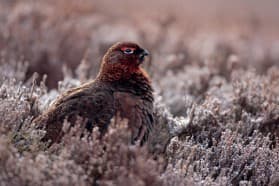
Early on a cold frosty spring morning I was able to photograph this red grouse from my vehicle Canon EOS-1D Mark II N, 500mm IS lens, 1/60th @ f4, ISO 200
Clothing
This is a vital part of anyone’s photography kit, and I place great emphasis on getting the best stuff for the job in hand. I have a variety of warm and waterproof trousers from Haglöfs and Gore-Tex jackets. The trick is to be able to put them on and take them off easily. My jackets are from the Mountain Range, and my fleeces are from the Paramo range. I’ve also got very comfortable socks and boots from Salomon.
Two-Way Radio
I have two-way radios so I can give one to clients if they are in a hide somewhere else. It gives them a chance to ask questions, and acts as a safety net should something become amiss – though this rarely happens.
Binoculars
Great for reconnaissance, I’ve got a pair of Swarovski EL 8.5x42s.

